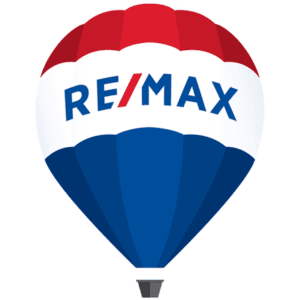Do you know that real estate investments, particularly rental properties, are the safest and long-term investment sources? The investors owning a rental property can generate a good cash flow, increase their wealth and achieve long-term benefits.
This article will discuss the important steps of calculating the rental property profitability, particularly for the people who invest in the real estate market of Ottawa. These tips are for newbies as well as seasoned investors.
The term investment property profitability refers to estimating the profitability of a rental property over a certain time period. If you want to find out the profit generated by an investment property, you have to find out the income generated by that property in relation to the expenses incurred for its maintenance.
Estimating the profitability of a rental property really helps investors. They can easily determine the worth of a property and whether a property can generate positive cash flow and a desirable return on investment (ROI) or not.
In this article, we explore the different factors that go into determining how much profit you should make on a rental property. The key features of investment property profitability are the following:
This includes the income generated from the rent of the property. Rental income is directly proportional to the positive cash flow. Higher rental income on property generates more positive cash flow.
Whenever investors buy a property, they have to calculate the operating expenses. The maintenance and operating costs impact the investment profitability. These include the property tax, property management fees, utility bills, property repairs, insurance and all other such costs.
The time period in which the property is vacant has a huge influence on profitability. If the property remains vacant for a long time period, then the overall rental income and the percentage of cash flow will also drop. The rental property might offer a good ROI if the vacancy time of the investment property is short.
When purchasing a property, the investors must keep in mind that all the properties that are purchased with mortgages also have some other expenses, such as interest and principal payment. These expenses must also be kept in mind while calculating ROI on a rental property
The market value of the property, the market condition, and changing trends in the real estate market have an important role, as these factors determine the ROI for a rental property. A good rental property generates a positive ROI.
Rental properties can be a great way to make passive income, but it’s important to know how much profit you should be expecting from your investment. Evaluation of profitability helps investors in decision-making and managing all kinds of risks. It also helps them set long-term financial goals and rental property mortgages.
This section lists some of the benefits of evaluating the profitability of an investment property:
Investors always want to ensure that rental property investments should generate positive returns. The calculation of profitability helps them make informed decisions and they can use their funds more effectively.
Real estate investment always involves lots of risks. These include fluctuations in the property purchase price, vacancies and repairs.
The evaluation of the investment property profitability has advantages as the investors can always identify the risks of renting the property in the very beginning and can devise strategies to eliminate all such risks. They can also find ways to avail tax benefits.
The ROI for a rental property has a long-term positive influence on the net rental income, which in turn affects the financial goals of the investor and the financial planning. The evaluation of the profitability helps in setting long-term financial goals.
The evaluation of the ROI calculation is also very important for the management of the cash flow. The investors can also have a positive cash flow if the amount of rental income is more than the amount of expenses on the property.
A positive cash flow shows a good return on a rental property. The investors gain financial stability and sustainability with the help of positive cash flow.
One other great benefit of evaluating investment property profitability is that investors get an estimate of the potential return from a rental property. ROI helps investors as they can easily measure the efficiency of an investment and how much it returns with respect to its income and expenses.
If you are an investor owning a rental property and you want to maximize the profitability of an initial investment, then you must always take into account several factors that can affect the profitability of an investment property. Here are a few factors:
Location plays a very important role in improving the profitability of an investment property. A property’s worth increases if the neighbourhood has all the facilities and amenities like schools, transportation, and employment opportunities.
The physical condition and type of property play a crucial role in the determination of rental property income. The tenants are attracted to all those properties which are in good condition and require fewer repairs and renovations. A property in good condition is usually acquired by the tenants for a longer period of time. It increases the cash flow, and in turn, the ROI would also be beneficial for the investors.
The real estate market always fluctuates with the changing market trends. These fluctuations impact the supply and demand of rental properties.
If the investors keep themselves updated with these changing market trends, they can make timely decisions to increase the profitability of their investments.
There is no denying the fact that a rental property needs care and love. However, if the operating expenses are increased too much, it can reduce the profitability of your property. The management of these expenses is necessary for a healthy cash flow and profitability; otherwise, the higher operating expenses will decrease the rental property ROI.
If the investors want better profitability, they must reduce the time period of vacancy. The lesser the time of vacancy, the higher will be the rate of profitability. The rental property owners must adopt effective marketing strategies to retain the tenants and minimize the time period of vacancy of the property. The lesser the vacancy time period, the more the income of a property.
The local zoning laws and regulations include laws on rent control. They can have a great impact on the return from a rental property.


Investors must always keep various factors in mind while they make decisions regarding investment. These factors include changing market trends, investor goals and property appreciation. For accurate and personalized analysis of the investment property profitability, it is always advisable to consult real estate professionals and financial advisors.
Here is a step-by-step guide on how to calculate ROI for rental property:
You have to identify all the operating expenses. The usual operating expenses in a property include property management fees, property taxes, insurance, maintenance costs, utilities, and all the other recurring expenses. You can get an estimate of the annual operating expenses by adding up all these expenses.
You can estimate the annual rental income by finding out the rental income of the comparable properties in the area.
You can estimate the annual rental income by finding out the rental income of the comparable properties in the area.
The NOI is the difference between the total annual operating expenses and the annual rental income. The investor has to subtract the operating expenses from the potential rental income.
NOI = Potential Rental Income – Operating Expenses
The fourth step is to get the capitalization rate or Cap rate. This key calculation actually determines the return on investment or ROI on rental properties. The investor can get the Cap rate by dividing the NOI by the current price or market value of the property.
Cap Rate = NOI / Property Value
Step 5: An Estimation of Cash on Cash Return
The investor needs to estimate cash on cash return at the fifth step. The investor can get the cash on cash return by dividing the annual net operating income by the total cash investment.
Cash on Cash Return = (NOI – Mortgage Payment) / Total Cash Investment
There are specific tools and software that assist in the profitability calculation. However, these tools do not eliminate the need for extensive research on the local market.
Each property is unique and requires a different combination of tools and techniques for profitability calculation. Here is a list of certain tools and techniques for the calculation of investment property profitability:
In the real estate market, there are multiple software which are specifically designed for investors. These software automatically perform all kinds of mathematical calculations, such as calculating expenses, taxes and market data.
Some examples of these software are RealData, BiggerPockets’ calculators, and DealCheck.
The investors can also calculate profitability by using Microsoft Excel or Google Sheets. You just need to enter all the property details, which include expenses and rental income. The spreadsheet will automatically calculate the potential returns.
Most real estate websites offer free online calculators for the calculation of investment property profitability. These calculators can automatically give investors an estimate of the profitability of the investment property.
For the purpose of commercial real estate investment, investors use advanced financial tools. These tools provide an in-depth analysis of the profitability of the investment property.
Local realtors and property managers can help in gathering data from the local real estate market. The local market reports provide all the details regarding rental rates, property values and market trends. The comparative market analysis also proves to be very beneficial as the investors can get an insight into the recent market sales, the potential rental income and the investment property profitability.
The real estate investment groups and educational resources also help in the calculation of investment property profitability.
The investors must adopt a very careful approach, conduct thorough research, and always take guidance from experienced professionals for the calculation of profitability.
If the investors are keen on achieving all the desired investment goals, they must also use a combination of different tools and techniques. Here is a list of some common errors in the calculation of profitability and how should the investors avoid them:
Investors sometimes underestimate the expenses. They are unable to calculate all the potential expenses, which include repair costs, maintenance costs, and the management fees of the property. It is very important to never underestimate the expenses. Otherwise, it disturbs all the profit projections.
How to avoid it:
Conduct thorough research about all the expenses of the property. You must always keep a margin for all kinds of unexpected costs.
The overestimated unrealistic rental income can result in an inaccurate profitability calculation.
How to avoid it:
This error can only be avoided if you do sound research on the market trends and rental rates of the local market. In this way, you can accurately assess the market value of your own property.
The condition of your property can play a critical role in determining the profitability of your property. If your property has been well-maintained, it might result in lower maintenance costs and higher profits. On the other hand, if your property hasn’t been well-maintained, it might result in lesser profitability. Investors often ignore this important factor and miscalculate the value of a property.
How to avoid it:
Always hire people for professional inspections so that you can get an accurate estimate of the due repairs and maintenance costs.
Sometimes investors misjudge the market trends. As a result, they are unable to put up the appropriate rental demand.
How to avoid it:
Investors must always keep themselves updated with recent market trends.
Investors can have incorrect assessments of the profitability of a property if they use incorrect formulas to calculate the Cap Rate, Cash on Cash Return etc.
How to avoid it:
It is always advisable that the investors must double-check the calculations and formulas.


Here is a case study which demonstrates the calculation of the profitability of a residential rental property:
The net operating expenses are the difference between the potential rental income and the operating expenses.
NOI = Potential Rental Income – Operating Expenses
NOI = $24,000 – $8,800 = $15,200 per year
Cap Rate = NOI / Property Value
Cap Rate = $15,200 / $300,000 = 0.0507 or 5.07%
This single-family rental property can make a profit as it generates a positive cash flow, has a Cap Rate of 5.07%, and a Cash on Cash return of 20.4%.
In real estate businesses, it is very important to calculate the profitability of an investment property. The investors just need to follow the above-mentioned steps for the calculation of profitability. These include steps like the calculation of the operating expense and potential rental income etc. Investors can achieve their financial goals if they make good and informed decisions.
Are you ready to find the profitability of your investment property? You can always try the free rental property calculator by Labrosse Real Estate and make informed decisions. Just visit https://www.labrosserealestate.com/ultimate-canadian-rental-property-calculator/. All you need to do is enter all the relevant details and increase your return on investment measures.
It is actually an investment strategy. According to this rule, on a single trade, the investors should never invest more than 2% of the capital.
The formula for EGI can be calculated by using the rental GPI, vacancy and credit costs and other income. EGI is the sum of rental GPI and other income, and the sum of these two should be subtracted from the vacancy and credit costs.
EGI = Rental GPI + Other income – Vacancy and credit costs.
According to the 1% rule in the real estate market, the monthly rent of the investment must be equal to 1% of the purchase price. For all the investors interested in buying the investment property, the 1% tool is really very helpful for them as they can achieve their investment goals by buying the right property.
Average Annual Profit = Total profit over Investment Period / Number of Years. Average Investment = (Book Value at Year 1 + Book Value at the end of Useful Life)
The ideal Cap rate is approximately between 5 and 10 percent. The investors can get the exact value depending on the type of property and the location of the property.
real estate investor, you can invest in:
Labrosse Real Estate Group
4366 Innes Road
Ottawa, ON, K4A 3W3
Direct: 613-227-6409
Email: Hello@LabrosseRealEstate.com
Office: 613-590-3000
Copyright © 2022 NICK LABROSSE
Nicholas Labrosse Courtier Immobilier Inc
Website created by Designful


Find out how much your home is worth with Labrosse Real Estate Group’s free home value estimation service – get started now!